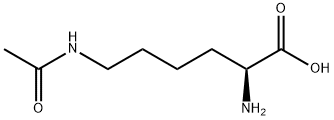CHEMICAL AND PHYSICAL PROPERTIES
| Physical Description | Solid |
|---|---|
| Melting Point | 250 °C |
| Collision Cross Section | 142.3 Ų [M+H]+ [CCS Type: DT, Method: single field calibrated with Agilent tune mix (Agilent)] |
SAFETY INFORMATION
| Signal word | Warning |
|---|---|
| Pictogram(s) |
 Exclamation Mark Irritant GHS07 |
| GHS Hazard Statements |
H315:Skin corrosion/irritation H319:Serious eye damage/eye irritation H335:Specific target organ toxicity, single exposure;Respiratory tract irritation |
| Precautionary Statement Codes |
P261:Avoid breathing dust/fume/gas/mist/vapours/spray. P280:Wear protective gloves/protective clothing/eye protection/face protection. |
COMPUTED DESCRIPTORS
| Molecular Weight | 188.22 g/mol |
|---|---|
| XLogP3 | -2.8 |
| Hydrogen Bond Donor Count | 3 |
| Hydrogen Bond Acceptor Count | 4 |
| Rotatable Bond Count | 6 |
| Exact Mass | 188.11609238 g/mol |
| Monoisotopic Mass | 188.11609238 g/mol |
| Topological Polar Surface Area | 92.4 Ų |
| Heavy Atom Count | 13 |
| Formal Charge | 0 |
| Complexity | 182 |
| Isotope Atom Count | 0 |
| Defined Atom Stereocenter Count | 1 |
| Undefined Atom Stereocenter Count | 0 |
| Defined Bond Stereocenter Count | 0 |
| Undefined Bond Stereocenter Count | 0 |
| Covalently-Bonded Unit Count | 1 |
| Compound Is Canonicalized | Yes |
PRODUCT INTRODUCTION
description
N(6)-acetyl-L-lysine is an N(6)-acyl-L-lysine where the N(6)-acyl group is specified as acetyl. It has a role as a human metabolite. It is a N(6)-acyl-L-lysine and an acetyl-L-lysine. It is a tautomer of a N(6)-acetyl-L-lysine zwitterion.
